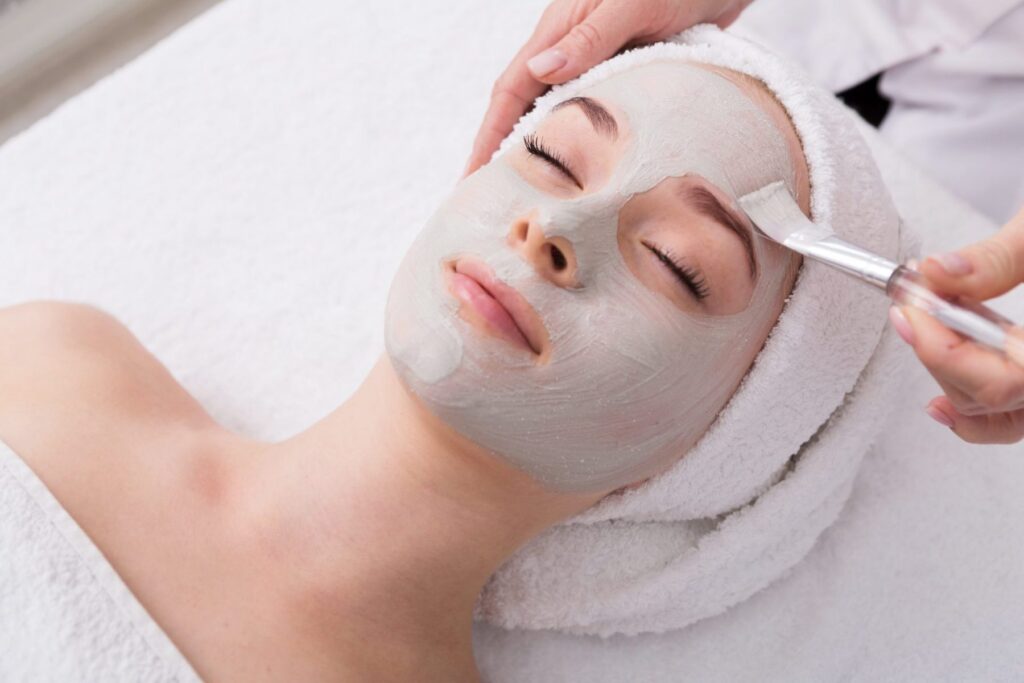When it comes to skincare, facials have become a fixation for many. We all crave that healthy, glowing skin that looks flawless without makeup. But how do facials really help, and which one is right for you? Whether you’re dealing with acne, dullness, or aging, there’s a facial treatment designed to meet your skin’s needs.
Let’s dive into the world of facials and how they can help you maintain glowing, radiant skin. By the end, you’ll know which facial is best for you and how to maximize its benefits.
Why Facials Are More Than a Beauty Treatment
Facials aren’t just a luxury; they’re essential to maintaining healthy skin. These treatments deeply cleanse, exfoliate, and hydrate your skin. By removing dead skin cells and dirt, facials help your skin breathe, resulting in a brighter complexion.
Additionally, facials improve blood circulation, promoting cell turnover and collagen production. This leads to firmer, more youthful-looking skin. Regular facials also address specific concerns like acne, pigmentation, and fine lines.
Understanding Different Types of Facials
With so many facials available, choosing the right one can feel overwhelming. Here’s a breakdown of popular facials and how they can help your skin:
- Hydrating Facials: Ideal for dry and dehydrated skin, these facials focus on replenishing moisture. They use hyaluronic acid and other hydrating ingredients to boost hydration levels.
- Anti-Aging Facials: These target fine lines, wrinkles, and sagging skin. They often include ingredients like peptides and retinol to stimulate collagen production and reduce signs of aging.
- Acne Facials: Designed to treat breakouts, acne facials use deep-cleansing techniques and salicylic acid to unclog pores and reduce inflammation. They help in preventing future breakouts while calming current flare-ups.
- Brightening Facials: If your skin looks dull or uneven, brightening facials focus on exfoliating dead skin cells and using vitamin C to enhance your natural glow.
- Microdermabrasion: This treatment gently removes the outermost layer of skin, revealing a smoother and more even complexion. It’s great for treating acne scars and hyperpigmentation.
How Often Should You Get a Facial?
The frequency of facials depends on your skin type and concerns. For normal to combination skin, getting a facial every four to six weeks is ideal. If you have acne-prone or oily skin, more frequent treatments may be beneficial to control breakouts.
For those with sensitive skin, opt for a gentler facial once a month. And if you’re targeting specific concerns like wrinkles or pigmentation, consult your esthetician for a customized schedule.
Pre-Facial Prep: What to Do Before Your Appointment
To get the most out of your facial, it’s essential to prepare your skin. A few days before your appointment, avoid using harsh exfoliants or retinoids to prevent irritation. On the day of your facial, cleanse your face thoroughly but skip heavy makeup.
If you’re prone to breakouts or have sensitive skin, inform your esthetician beforehand. They’ll tailor the treatment to avoid aggravating your skin. Lastly, stay hydrated—well-hydrated skin responds better to treatments.
Post-Facial Care: How to Maintain Your Glow
After a facial, your skin will be more sensitive, so it’s crucial to follow the right post-care routine. Avoid direct sun exposure and wear SPF daily. Your skin is more vulnerable to UV damage post-treatment.
Avoid exfoliating for at least a week, as your skin has already been deeply exfoliated during the facial. Stick to gentle, hydrating products to keep your skin balanced. Drinking plenty of water will also help flush out toxins and keep your skin looking fresh.
If your facial included extraction, avoid touching your face to prevent bacteria from entering your pores. Allow your skin to heal and breathe for a day or two before applying heavy makeup.
Maximizing Your Results: Home Care Between Facials
Consistency is key when it comes to skincare. To maintain your facial results, incorporate a tailored skincare routine at home. Cleanse your face twice daily to remove dirt and oil buildup. Use a toner to balance your skin’s pH, and always follow up with a moisturizer.
Weekly exfoliation helps remove dead skin cells, keeping your complexion smooth and radiant. However, be gentle and avoid over-exfoliating, especially if you have sensitive skin. Use serums that target your specific concerns, such as hyaluronic acid for hydration or vitamin C for brightening.
Adding a sheet mask or hydrating mask once a week can also give your skin a boost between facials. Opt for masks that match your skin type and concerns.
Common Myths About Facials: Debunked
Many myths surround facials, so let’s clear a few up:
- Myth: Facials are only for people with problem skin.
Fact: Facials benefit all skin types by maintaining skin health and preventing future issues. - Myth: You don’t need to get a facial if you have a good skincare routine.
Fact: Facials complement your routine by providing a deeper clean and targeted treatment. - Myth: Facials will make your skin breakout.
Fact: While extractions might cause temporary redness, facials ultimately clear out clogged pores, preventing breakouts.
Finding the Right Esthetician
A skilled esthetician makes all the difference in your facial experience. Before booking a session, research the spa or clinic. Check reviews and ensure the staff is certified.
During your consultation, discuss your skin concerns in detail. A good esthetician will customize the facial based on your skin type and needs. They’ll also provide personalized aftercare advice.
The Bottom Line: Facials Are Worth the Fixation
Facials aren’t just a beauty trend; they’re a powerful tool in your skincare routine. Whether you’re aiming to hydrate, clear breakouts, or brighten your complexion, there’s a facial designed to meet your needs. Regular treatments will keep your skin healthy, glowing, and youthful.
Invest in facials for long-term benefits, but don’t forget about consistent home care. The combination of professional treatments and a solid skincare routine will keep your skin looking its best all year long.
